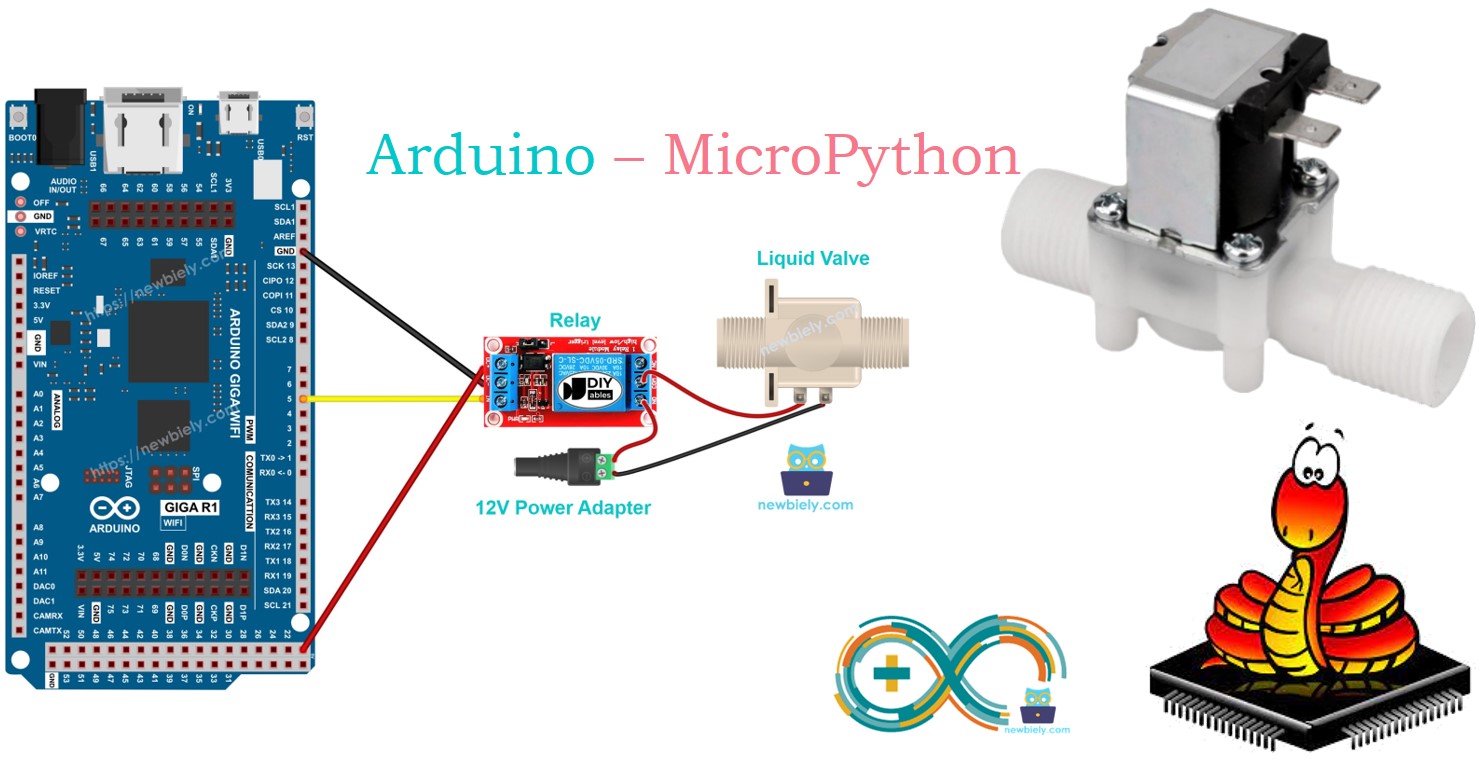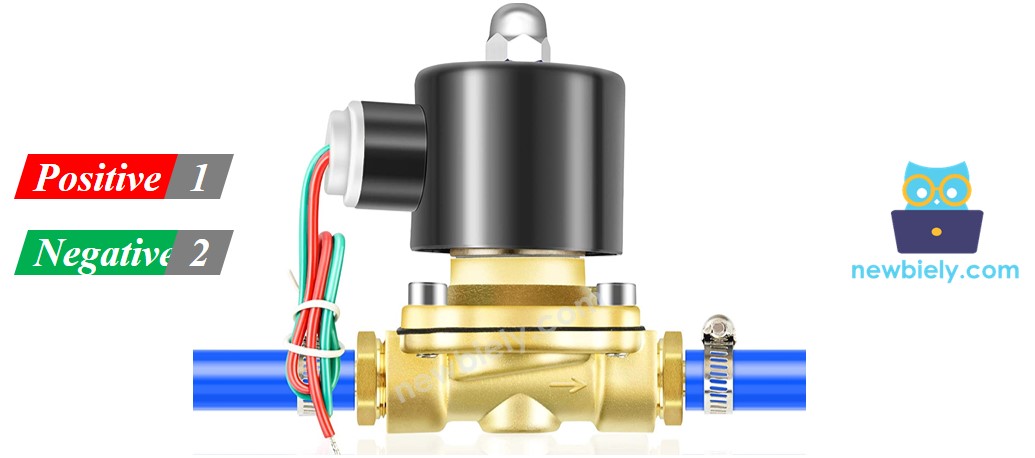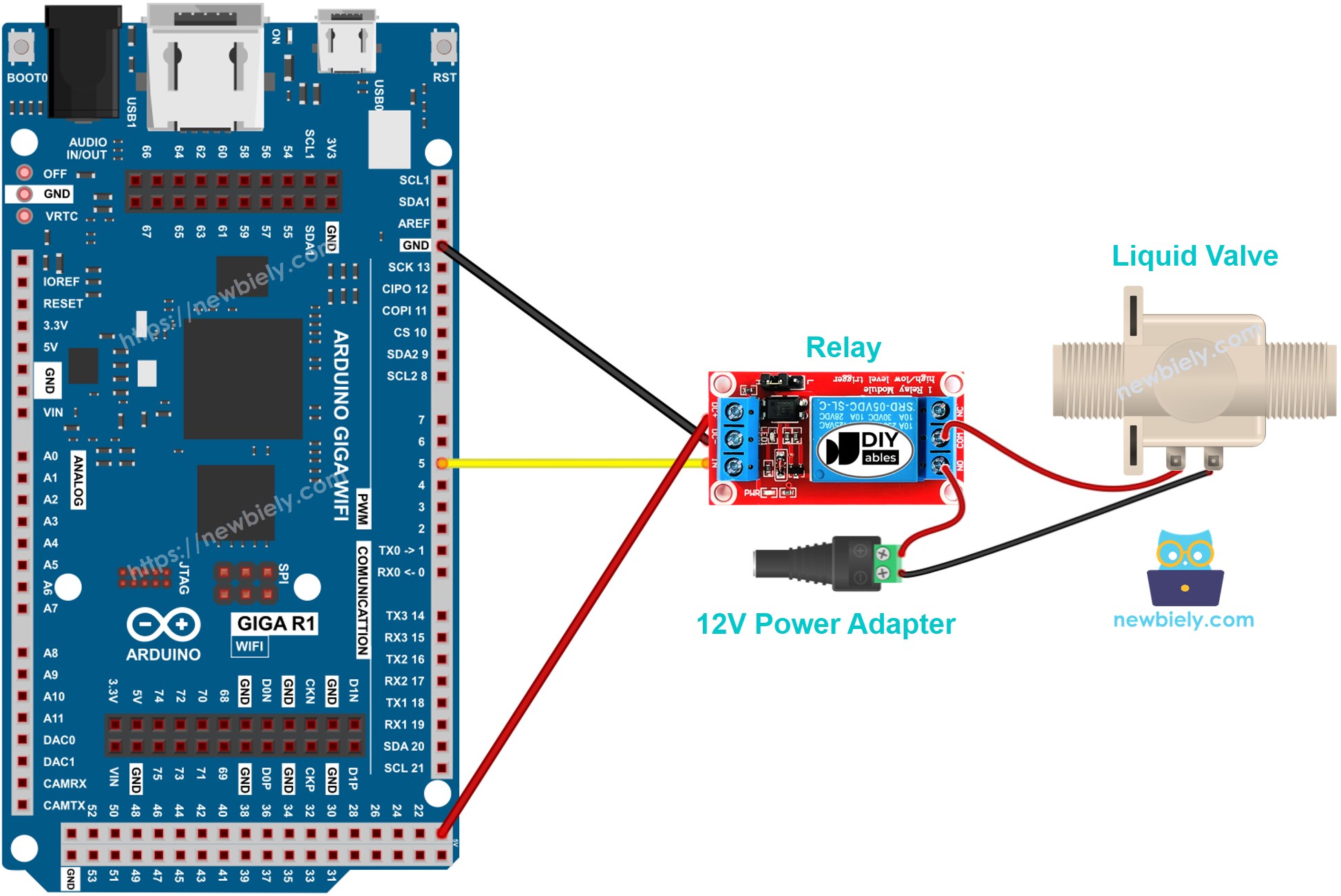Arduino MicroPython Water/Liquid Valve
This tutorial teaches you how to control liquid flows, such as water, beer, or oil, using an Arduino with MicroPython and a solenoid valve. We will cover:
- How to connect the solenoid water valve to the Arduino
- How to write MicroPython code for the Arduino to control the solenoid valve

Hardware Preparation
Or you can buy the following kits:
| 1 | × | DIYables Sensor Kit (30 sensors/displays) | |
| 1 | × | DIYables Sensor Kit (18 sensors/displays) |
Additionally, some of these links are for products from our own brand, DIYables .
Overview of Water/Liquid Valve
Pinout

A solenoid valve typically has two connections:
- Connect the positive (+) pin (red) to the 12V DC power supply.
- Connect the negative (-) pin (black or another color) to the GND of the DC power supply.
How Water/Liquid Valve works
Normally, the valve remains closed. When you apply 12V DC to the two terminals, the valve opens, allowing water or other fluids to flow through.
※ NOTE THAT:
Some valves have a gasket and need a certain amount of pressure to open when 12V DC is applied. This pressure is provided by the liquid flow. Additionally, some valves only allow liquid to flow in one direction.
How to Control Water/Liquid Solenoid Valve
When the valve receives 12V power, it opens. To control the valve with an Arduino, you need to use a relay. The Arduino sends signals to the relay, which then controls the valve. If you're unfamiliar with how a relay works, its pin configuration, or how to set it up, check out the Arduino MicroPython Relay tutorial.
Wiring Diagram

This image is created using Fritzing. Click to enlarge image
Arduino MicroPython Code
This code will switch the water valve ON for five seconds, then switch it OFF for another five seconds.
Detailed Instructions
Here’s instructions on how to run the above MicroPython code on Arduino with Thonny IDE:
- Make sure Thonny IDE is installed on your computer.
- Make sure MicroPython firmware is installed on your Arduino board.
- If you are new to Arduino with MicroPython, see the Getting Started with Arduino and MicroPython.
- Connect the Arduino board to the water valve according to the provided diagram.
- Connect the Arduino board to your computer with a USB cable.
- Open Thonny IDE and go to Tools Options.
- Under the Interpreter tab, select MicroPython (generic) from the dropdown menu.
- Select the COM port corresponding to your Arduino board (e.g., COM33 on Windows or /dev/ttyACM0 on Linux).
- Copy the provided Arduino MicroPython code and paste it into Thonny's editor.
- Save the MicroPython code to your Arduino by:
- Clicking the Save button or pressing Ctrl+S.
- In the save dialog, choose MicroPython device and name the file main.py.
- Click the green Run button (or press F5) to execute the code.
- Check the water flow.
Code Explanation
You can find the explanation in the comments of the Arduino MicroPython code provided.
